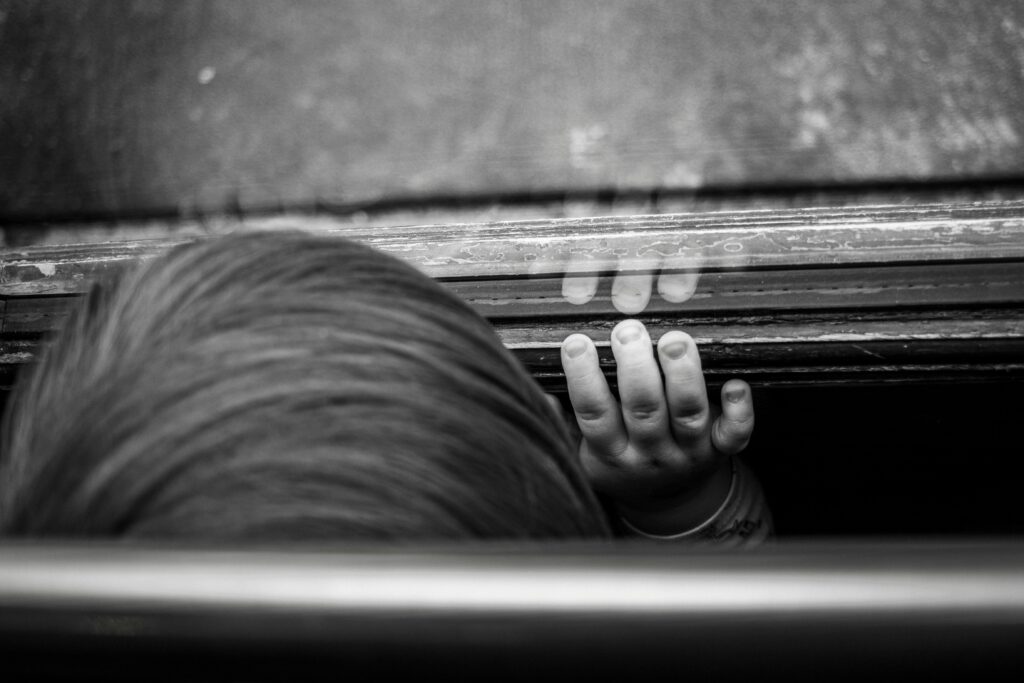SIDS, or sudden infant death syndrome, is the sudden unexplained death of an infant under one year old.
According to the National Institute of Health, it is the leading cause of death among babies between 1 month and 1 year of age. But, the rates of SIDS has dropped considerably since the early 1990s with the American Academy of Pediatrics’ safe sleep recommendations and the Back to Sleep campaign.
Below, we’ll go over those recommendations and what you can do to reduce the risk of SIDS and keep your sleeping baby safe.
Lay Your Baby on their Back to Sleep
Up until 1 years of age, babies should be placed on their back to sleep for every nap and bedtime. If your baby rolls from his back to his stomach or side, he can be left in that position if he is strong enough to roll from tummy to back and vice versa.
If your baby falls asleep in a swing, car seat or other carrier, move your baby to a firm sleep surface as soon as possible.
Young babies find swaddling comforting and can help them sleep. When you baby learns to roll, stop swaddling them for sleep.
Place your Baby to Sleep in a Safe Crib
Babies need to be placed in a firm mattress without toys or bedding in a crib that meets today’s safety standards. To learn more, visit our blog post about Choosing a Safe Crib and Bedding.
Room Share with Your Baby
Your baby should sleep in your room, but not in the same bed, for at least 6 months, but preferably up to one year of age. Keep your child’s crib or bassinet within arm’s reach of your bed.
Breastfeed Your Baby
Breastfeeding your baby reduces the risk of SIDS. The AAP recommends breastfeeding for at least one year, with breastmilk being the sole source of nutrition until your baby is 6 months and you introduce solids.
Skin-to-skin contact is especially beneficial for newborns. Babies should be placed skin-to-skin on their mother’s chest right after birth for at least the first hour. Babies benefit from skin-to-skin contact when breastfeeding as well as when being bottle fed.
Don’t Share a Bed with Your Baby
Sharing a bed with your baby puts them at a higher risk of SIDS, suffocation, or strangulation. Only bring your baby to bed to feed them or comfort them and then place them in their own sleep space when you are ready to go to sleep. If there is any possibility you might fall asleep, make sure there is nothing nearby that could suffocate or overheat your baby, such as pillows, sheets, or blankets.
Be careful not to fall asleep on a couch, sofa or armchair with your baby. And laying your baby to sleep on one of those surfaces is especially dangerous.
Avoid Smokers and Smoking Areas
Keep your baby away from people who are smoking and areas where people typically smoke to reduce the risk of SIDS. If you are a smoker, try to quit, and make sure to keep your car and home smoke free. Don’t allow anyone to smoke near your baby, even if you’re outside.
Take Your Child to All Recommended Well-Child Visits
By scheduling and attending all well-child visits that are recommended in your baby’s first year, you’ll keep your baby on track for vaccinations. Recent studies show immunizations may have a protective effect against SIDS.
Don’t Let Your Baby Overheat
Keep your baby’s room a comfortable temperature and place the crib away from heating ventilation.
Don’t overdress your baby. Your baby should wear no more than one extra layer than you would wear. Your baby may be overheating if she is sweating or her chest feels hot.
Offer Your Baby a Pacifier When Sleepy
Giving your child a pacifier at naps and bedtime can reduce the risk of SIDS. Keep in mind not all infants like pacifiers, and if the pacifier drops out while sleeping, you do not have to put it back in their mouths.
Do not use pacifiers that attach to clothing or are attached to a stuffed toy or object.
Note: If breastfeeding, wait until 3-4 weeks when breastfeeding is established to offer a pacifier.
Use Caution When Buying Products or Monitors to Help Reduce the Risk of SIDS
Home heart or breathing monitors have not been found to reduce the risk of SIDS, though they can be helpful for babies with breathing or heart problems.
According to the AAP, special mattresses, specialized sleep surfaces, positioners, and wedges have not been shown to reduce the risk of SIDS.
Steps to Take When Pregnant
SIDS prevention starts before the baby is born. Pregnant moms who attend all recommended prenatal appointments have a lower risk of their baby dying of SIDS.
While pregnant and after the birth of your newborn, do not smoke, drink alcohol, or use drugs. You also should avoid smokers and places where people smoke to avoid second-hand smoke.


